| FEATURE ARTICLE, NOVEMBER 2005
TEXAS RETAIL ROUNDTABLE
An in-depth discussion with Texas' retail experts.
Interviews by Lindsey Walker
Texas Real Estate Business recently spoke with industry experts in Austin, Dallas, Fort Worth, Houston and San Antonio to discuss the state's vibrant retail market. Interviewees included: Randall Stone, Carter & Burgess; Ramiro Cavazos, City of San Antonio; Karl Zavitkovsky, City of Dallas; Robert Sturns, City of Fort Worth; Vaughn Miller, Henry S. Miller Commercial; Darrell Lake, Hillwood; Larry Levine, Levcor, Inc.; Jerry Goldstein, Marcus & Millichap; Sherry Sanchez and Dean Janeff, NAI Commercial Industrial Properties Company; Chuck Siegel, NAI Rohde, Ottmers & Siegel; Bill Jackson, NorthMarq Capital; Edward Page, Page Partners Realty; Gregory Kallenberg, Schlosser Development; William Forrest, Sperry Van Ness; Mark Reeder, Staubach Retail Services; Eric DeJernett, Trammell Crow Company; Rex Paine, Torreón Capital; Mickey Ashmore and Tom Sineni, United Commercial Realty; and Herbert Weitzman, The Weitzman Group.
Dallas
TREB: Can you give me an overview of the Dallas retail market?
 |
Vaughn Miller
Henry S. Miller Commercial
|
|
Miller: Basically, the retail market in Dallas is as strong as it's ever been, and it's getting stronger. That's due to increased new home growth and job growth. As those two items continue to grow, so does the migration with population. What that is doing is creating more demand for retail. I think that developers as a whole are more prudent today. There are very few speculative projects at all being built due to strict underwriting standards that most lenders have and due to simply the fact that developers have learned that you just can't build speculative shopping centers anymore. So, everything we're seeing built is either 50 to even 100 percent pre-leased before it comes out of the ground. I think we've done almost 6 million square feet of new construction already this year in Dallas/Fort Worth. Last year's was right at 8 million, and I think we're going to top that this year. But, the good news is that, again, that is primarily 50 to 75 to 100 percent pre-leased. A lot of that is build-to-suits for Walgreens and CVS/pharmacy, which is also interesting in our market — the drugstore wars have now settled. The drugstores all came into this market last year very aggressively, buying up prime real estate corners, and now that CVS/pharmacy and Eckerd have merged, that's left more options for developers on good corners. The banks have now come forward, and we have more and more banks, free-standing bank sites, than ever before. So that's a good sign. That means that banks like Dallas.
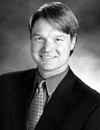 |
Mark Reeder
Staubach Retail Services
|
|
Reeder: In my estimation, we have a very strong retail market. I believe that's really due to the fact that we have a strong residential growth factor in north Texas, and in Dallas/Fort Worth, specifically. I think last year we were ranked Number 6 as far as the fastest growing residential markets. We had about 50,000 jobs created. I think this year they're projecting between 60,000 and 70,000 jobs for our market. So, I think the continued job growth and residential growth creates demand for shopping centers and new retail development. Ashmore: Dallas/Fort Worth continues to find ways to add more successful and vibrant shopping centers and districts. With unemployment continuing to drop and housing starts up from 2004, retailers look favorably on the region. Vacancy is reportedly near an all-time low. Urban infill for retailers is tricky; however, the expansion of NorthPark Mall and West Village and the announcement of Park Lane Place have given many new restaurateurs and retailers a way to enter Dallas proper. Suburban growth seems to see no limits. Even with the lack of grocery store expansion, new centers continue to be announced in south Denton County, Frisco, Allen, northwest Tarrant County, Arlington, Cedar Hill and Fairview. Overall, new retail brands like IKEA, Cabala's, LA Fitness and Sprouts found Dallas/Fort Worth in 2005, and several more are slated for the future.
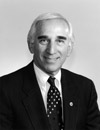 |
Herbert Weitzman
The Weitzman Group
|
|
Weitzman: The retail market continues to show strength in terms of occupancy, retailer demand and demand-based construction. The retail real estate market is benefiting from an economy that reports strong gains in the housing sector, as well as positive job growth. We've seen occupancy rates steadily increase during the past decade. This has resulted in a retail market that is largely balanced in supply and demand. Typical vacancies in the market are seen in older, outmoded retail spaces that require retrofits to attract the new generation of tenants and stores. We're proud to note that the retail market ranks among the healthiest large markets in the nation. Zavitkovsky: We continue to experience a period of sustained economic performance, bolstered by our area's economic strengths and evidenced by a continuing high rate of occupancy. Our healthy economic climate continues to attract new retailers and encourages the expansion of our existing tenant base. The city of Dallas is home to 1.2 million people who love to shop.
TREB: What trends do you presently see in retail development in Dallas?
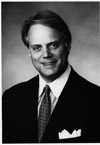 |
Mickey Ashmore
United Commercial Realty
|
|
Ashmore: Mixed-use projects continue to surface throughout Texas. The need for projects built right on the street, creating an urban edge, seems to be of great interest. People want to experience more than a sea of parking, they want to interact, be stimulated and enjoy their free time. Creating pedestrian-oriented environments and interesting places for people has become important in all facets of retail development. Weitzman: We're seeing quite a few trends. For example, in October, Dallas saw its first open-air mall. The mall, Firewheel Town Center, features a mix of department stores and power retailers, along with lifestyle retailers and restaurants, all in an open-air town square setting. The mall features Foley's, Dillard's, AMC, Barnes & Noble, Circuit City and more. The mall totals about 800,000 square feet now and will add phases to bring it up to approximately 1 million square feet. The mall also is attracting peripheral development. The first of these projects is Firewheel Market, a 106,000-square-foot specialty lifestyle center with a line-up that includes Chase Bank, Wolf Camera, Mattress Giant, Potbelly Sandwich Works, Chipotle, Pei Wei and Starbucks Coffee.
Reeder: I almost hate to use the word trend, but what I'm seeing is lifestyle centers, mixed-use developments that have a residential component and open-air malls. I think there were maybe two standard malls developed in all of the U.S. last year. Those are just very few and far between now. Back when I was young, growing up in Dallas, there was a wonderful shopping center right next to my grade school called Highland Park Village right here in the older part of Dallas/Fort Worth. Now we're coming back and building shopping centers similar to how Highland Park Village was built several decades ago. We've really come full circle. We have several developments that are already successful now. We have The Shops of Legacy Village, which is doing a Phase II up on the edge of Frisco. Village on the Green was just announced across from the Galleria in Dallas. And West Village is in the uptown portion of our city. So, we have some great examples of lifestyle centers and mixed-use developments.
TREB: How is the city working with retailers and developers to encourage development?
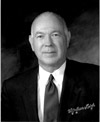 |
Karl Zavitkovsky
City of Dallas
|
|
Zavitkovsky: The Office of Economic Development is in the enviable position of having the support of our city council, which provides us a full array of economic development tools to incentivize retailers and developers. We stand ready to assist both the developer and the retailer in every facet of the development process from site selection to demographic research, from planning to obtaining a certificate of occupancy. We are there to help turn the shovel at the groundbreaking and cut the ribbon at the grand opening. TREB: Where is the majority of development taking place? For what reason?
Reeder: We're in a very dynamic market. We have historically grown to the north. I'm a native, and being from this part of the world, historically we've always grown to the north. But, now, we're much more well rounded, and we're really seeing growth in all directions. A 700,000-square-foot open-air mall called Uptown Village has been announced in Cedar Hill, which is to the south of downtown Dallas. There's growth to the east with Firewheel Town Center in Garland. There's growth to the west in Fort Worth at Interstate 35 and Heritage Trace. So, now, we continue to see that northern push, but we're seeing it in the other three directions as well.
Ashmore: Retail development is widespread throughout North Texas, but certainly, the opening of Firewheel Town Center in Garland will be the most significant opening in 2005. At least eight lifestyle and/or lifestyle/power centers have been announced for 2007 and 2008 openings. All of these projects are driven by retail demand. Voids in the market for lifestyle tenants and new tenants to the market needing options are an obvious reason for this activity.
TREB: What is the retail lending climate in Dallas and how does it compare with the other Texas markets? Nationally?
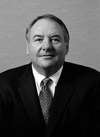 |
William Jackson
NorthMarq Capital
|
|
Jackson: We have offices all over the state, and from what I can tell, retail is strong in every portion of the state at this point in time. We're working on a number of power centers, lifestyle centers and grocery-anchored centers. And there's just great demand both from the equity side and the lending side to do those types of deals. There's just high demand. I would say that in areas like Texas that are experiencing positive job growth, and really all across the country where you're experiencing job growth, the retail markets are very good. TREB: How is the investment climate in and around Dallas?
Jackson: It's very, very active. There's a lot of product that's on the market for sale, and there's a lot of product that's being developed. It's very active.
TREB: What type of retail projects, properties or retailers are lenders interested in?
Jackson: I would say that the well-anchored, power-center type developments are still most sought after. The lifestyle centers are also very popular, and there are a number of them that are getting built and leased at this point in time. I think that retail is just a very popular asset class with lenders. They just can't get enough of it. And neither can the equity providers and the buyers. So it's a good time for retail in the Texas markets.
TREB: Does UCR have any major retail developments in the works in the area?
Ashmore: UCR has finalized the leasing of Cooper & Stebbins' 250,000-square-foot Phase II of Southlake Town Square. Construction is well underway for the April 2006 opening. Tenants include Harkins Theatres, Barnes & Noble, The Cheesecake Factory and White House Black Market, among others. UCR has been retained by Regency for advisory and leasing services for The Shops at Highland Village, a 350,000-square-foot lifestyle center anchored by Barnes & Noble and 25,000 square feet of Gap concepts, as well as Chicos and Talbots. Scheduled for an early 2007 opening, this site located at FM 2499 and FM 407 is being greatly received by all the lifestyle tenants. We also are working with Hillwood and Trademark at Alliance Town Center where both a power line-up and a lifestyle concept will be mixed. Phase I will have approximately 700,000 square feet of retail, cinema, residential and offices centered around a town square. The Pines of Flower Mound, a development by Rosebriar, is a 133,000-square-foot Kroger-anchored center that we are pre-leasing. It will be one of the few new traditional grocery stores built in 2006.
TREB: Are you seeing more big boxes or smaller tenants coming into your market? Are there any new retailers entering the market?
Weitzman: The retailers entering the market are a mix of larger and smaller tenants. But two of the most notable new entries are very large. Cabela's, a 235,000-square-foot outdoor sports superstore, opened this year in north Fort Worth. IKEA opened its massive 350,000-square-foot furniture store this August. Another active retailer is Bass Pro Shops, which broke ground in March on a 120,000-square-foot store in Garland (its second in the market) that is set to open next year. Wal-Mart also remains active, especially with its Supercenter concept, which ranks as the Number 1 grocery chain in Dallas/Fort Worth. Wal-Mart Supercenter opened stores this year in markets including McKinney and Roanoke, as well as Forney, east of Dallas. Wal-Mart opened its smaller Neighborhood Market concept in the Uptown area of Dallas earlier this year. The market's other major department-store-and-grocery combo store, SuperTarget, is also active and adding new locations including those in Lake Worth and Fort Worth's central city.
Reeder: We've got continued expansion from the ones you would expect to see. JCPenney is not a new retailer, but they've reinvented themselves and are pursuing an off-the-mall concept. Sprouts grocery, a Phoenix-based specialty grocery chain, has opened a location here in Dallas/Fort Worth, and I think they project to have eight by 2007. We have a very competitive grocery store market, so it's unusual that somebody else has come in and is trying to get a piece of that market share, but they are. There's a retailer called Floors Today, which is a 6,000-square-foot to 10,000-square-foot user, coming on the market. They'd like to have 15 locations in the next year or two. There are some selected areas where we have some new retail activity, not as much as we'd like to see. But there is some new activity in the market.
Miller: In terms of new retailers coming in, of course, the big news is IKEA. Their opening was about a month ago in Frisco, and they absolutely are setting records. Frisco still continues to be the big winner as far as growth markets. Denton continues to be a strong market. We're now becoming a 360 degree market because now we're seeing growth down in Cedar Hill and beyond in Waxahachie and De Soto. Then to the east, we have Forney, Texas, growing with a new power center and Wal-Mart. Dallas is really growing in all directions for probably the first time in 20 years. That speaks volumes about our market.
TREB: Who are the active retail developers?
Weitzman: Active retail developers include Cencor Realty Services, which is underway with several new, expansion and renovation projects, including Best Buy-anchored Cedar Hill Pointe in Cedar Hill and Firewheel Market in Garland; General Growth, which is developing Firewheel Town Center; Weber & Company, whose projects include Montgomery Plaza; and quite a few others.
TREB: What does the leasing market look like?
Weitzman: As you can see by the active retailer expansions and the steady development market, the retail leasing market is excellent. New projects are significantly pre-leased, and it is steady leasing demand that is resulting in 4 million square feet of new retail space in Dallas/Fort Worth this year.
Reeder: I think the leasing market is strong. The reason for that is because we have that continued residential growth and we typically do demand-based development, which means we don't build a project until it's substantially pre-leased. We've been able to maintain about 90 percent occupancy across all the different product types for the last several years. Of those product types, power centers tend to have the highest occupancy, with 93 percent to 94 percent, whereas smaller strip centers may be a little less than 90 percent. According to studies I've seen, that's after adding 6 million square feet in the last year and a half. We're adding GLA, and we're maintaining that 90 percent occupancy. The only thing that is a little bit of something to be cautious about on the horizon is there are continued increased costs with steel and concrete, and now with this most recent surge in fuel prices. It's something to be aware of because it's going to continue to push construction costs up, and it's going to eventually result in higher rental rates. It's just going to cost more to build shopping centers.
TREB: What do you see in the near future for the retail market in your area?
Weitzman: We'll continue to see a strong retail market as new and expanding concepts seek to take advantage of the strengths of the area's economy. We're seeing residential growth in many Dallas/Fort Worth submarkets, and retail will follow that residential.
Ashmore: There will be continued growth by SuperTarget and Wal-Mart. I believe you will see the specialty food store segment grow, and the traditional grocers continue to decline. Urban infill mixed-use projects with retail and residential will continue to be built in high-density areas. Finally, retail targeting the Hispanic community will continue to increase.
Zavitkovsky: It is only going to get better, with the emphasis that the city of Dallas is putting on restoring retail to downtown Dallas and the fostering of transit-oriented development (TOD) at DART light-rail stations.
Reeder: I see power centers and neighborhood centers being built in those northern crescents. I see infill and redevelopment of older shopping centers, and I see an active development market following the residential growth or redeveloping where there's already density and households with consumers that have the ability to support new retail.
THE RETAIL CONNECTION TO BREAK GROUND ON ARLINGTON HIGHLANDS THIS MONTH
The Retail Connection expects to break ground this month on Arlington Highlands, a two-phase, 900,000-square-foot hybrid center located at the northeast corner of Interstate 20 and Matlock Road in Arlington. The Dallas-based company is developing the 80-acre project in a joint venture with the property owner, the Mathes family. Featuring a combination of box tenants and lifestyle components, as well as 50,000 square feet of office space, in a park-like, pedestrian-friendly setting, the development brings a unique mix to the Metroplex marketplace.
“When we got started, we found that not only were there the box tenants we were looking for, but we also found a totally untapped market of lifestyle users that were not in the market and were looking for this type of open-air, high-quality project,” says David Wilson, president of Connected Retail Services, the The Retail Connection's development arm. “We have had a tremendous response based on what we are offering.”
Some of the retailers that are in lease negotiations with The Retail Connection include Orvis, Chico's, Coldwater Creek, Ann Taylor Loft, J. Jill, Jos. A Banks Clothiers and Eddie Bauer. Borders Books & Music is in negotiations to anchor the lifestyle center, and the Studio Movie Grill will headline the project's entertainment portion.
In addition to its distinctive tenant offerings, Arlington Highlands' architecture also sets it apart. Designed by project architect Good Fulton & Farrell, the center features such high-quality elements as brick and stone masonry and two-story elevations.
“There are a lot of quality aspects built into this project,” says Daniel Fuller, vice president of Connected Retail Services. “A lot of thought has gone into the design of the project. There's nothing like it anywhere nearby.”
The Retail Connection plans to open the more than $100 million Phase I, which comprises approximately 600,000 square feet, in late winter 2006. “We expect to complete some of our box tenants in time for the Christmas shopping season,” Wilson says.
“Arlington Highlands is a unique retail project. It is unique for the retail tenants, and it is also unique for our customers,” says Alan Shor, president of The Retail Connection. “Oftentimes, you don't have both of these components. Here we have them both.”
— Lindsey Walker |
HOUSTON
TREB: Can you give me an overview of Houston as far as retail is concerned?
 |
Edward Page
Page Partners Realty
|
|
Page: The retail real estate market in Houston remains very healthy. New projects are being built to meet demand, retail income properties continue to trade actively at national average cap rates, retail sales remain solid, and new and existing retail chains continue to open new stores. Levine: It's very strong, very bullish right now.
Goldstein: Houston has a healthy retail market. Even though the overall occupancy has hovered around 86 percent, which seems low, for the last 5 years, this is a reflection of big box vacancies both in open-air centers and in regional malls. This has been as a result of bankruptcies and discontinued formats. Otherwise, the retail market is in good balance, propelled by population growth and increased retail spending. It is correspondingly driven by retailers wanting to expand and reposition existing units as well as those wanting to come to Houston.
Forrest: Overall, the market is in the best shape that it's been in a long time, as far as raw demand. Vacancy in the centers is running somewhere around 12 percent. The community centers are doing better as far as occupancy, but some of the neighborhood centers have lower occupancies. That's what brings the overall city down. And that's mainly because, in Houston, we have big, sprawling residential growth and most of the growth is out in the suburbs where they're building thousands of new houses and shopping centers just about as fast as they can. They're building these centers without a lot of them being pre-leased, and when they come on they show a little bit higher vacancies than normal because of that. Right now, retail is probably the highest selling thing and in the biggest demand. I would say that we've got about 3 years of good time in retail as far as being stabilized and high prices. If the population keeps growing the way it is, it's going push it even further. But, we're in a cycle now, which means we're going to start to have an oversupply. When things get this good, that's usually what happens. We're on the edge of that, the beginning of an oversupply.
TREB: What trends do you presently see in retail development in Houston?
Page: Neighborhood grocery-anchored and power centers continue to be built as anchor tenant interest dictates. Small, unanchored centers are also being built in large numbers and, for the most part, leasing up at reasonable velocities. Several specialty anchored lifestyle, town center and multi-use projects are under construction or in the pre-construction lease-up phase. Leasing activity is brisk on these projects.
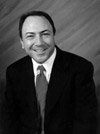 |
Jerry Goldstein
Marcus & Millichap
|
|
Goldstein: New construction completions are down from 4 million square feet to 2.5 million square feet after years of steady growth. However, there are 6.5 million square feet under construction. The current decline is due to national tenants who have completed or nearly completed their store coverage in the Houston market, such as Wal-Mart and Walgreens, among others. Forrest: Most of the centers that are being built are the community centers. Right now, there are about 57 centers that have been proposed in Houston, and there are another 31 that are under construction. Then, there are 26 that just came on the market. The breakdown of that is that three-fourths of those are neighborhood-type centers, as opposed to community centers, which get up in the 50,000 square feet to 80,000 square feet range. You don't build as many of those. People are interested in neighborhood services and specialty-type centers that meet the need for that specific neighborhood. It seems like the quality of the centers that they're building in these neighborhoods are a lot better quality than in the past with the small strip centers. They're taking on a lot better design and appeal. Since Hurricane Katrina, the biggest thing I've seen is that, with all the people that've moved, we probably gained somewhere between 150,000 to 200,000 people. It creates a lot of demand for these neighborhood centers and community centers in the area. That's really the biggest thing I've seen, the sprawling growth.
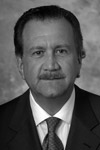 |
Larry Levine
Levcor, Inc.
|
|
Levine: It's still on the uptick. There are a lot of big box and a lot of infill, smaller centers in the inner city. TREB: Where is the majority of developing taking place? For what reason?
Page: Predictably, the majority of new retail development is in the areas of highest residential growth — Pearland, Katy/Cinco Ranch, the Northwest Freeway corridor, the FM 249/Tomball corridor and The Woodlands. Secondarily, there are numerous multi-use projects with sizeable retail components planned in infill areas such as the River Oaks, Uptown/Galleria and the Town & Country/Memorial Villages area.
Forrest: Probably the largest actual construction, square footage wise, is the west part of Houston along Interstate 10 West as it goes out to Cinco Ranch. In 2005, there's going to be about 1 million square feet built in this West Houston area. That's 13 centers, and there's another 3.5 million square feet in that area that's proposed. Then the northwest is a strong area, out close to Compaq computers. They're going to add about 950,000 square feet, and they've got about another million and a half proposed coming on 11 centers in 2006. Those are probably the two hottest areas when you look at the actual growth or number of centers and square footage. The majority of those, which is 65 percent to 70 percent, are neighborhood, specialty-type centers.
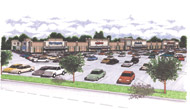 |
Levcor, Inc. is developing a 110,000-square-foot center in The Heights, which is 75 percent complete.
|
|
Goldstein: If you were choosing regions driven by population growth, retail expansion is very active in the west, northwest and southwest quadrants. There is also healthy growth in south Harris County, north Galveston County and north Brazoria County. Pearland especially has been a town that has had explosive growth. Not only has there been growth of traditional neighborhood, community and regional centers, but this area, which was little known 6 years ago, has multiple developers planning lifestyle centers. TREB: Who are the active retail developers?
Page: Several national developers are attempting to enter the market for the first time. Those include CBL, Poag & McEwan, Developers Diversified Realty, Chelsea Property Group, Continental Real Estate Companies and Cousins Properties.
TREB: Are there any major retail developments planned or underway?
 |
Levcor, Inc. is developing Hedwig Village, a 165,000-square-foot project that will be completed Memorial Day 2006.
|
|
Levine: Yes. We've got Hedwig Village, which is 165,000 square feet that we're finishing up Memorial Day. We've also got our center in The Heights, which is 110,000 square feet and 75 percent complete. Then, we're looking at two other big development projects, each one would be probably 400,000 to 500,000 square feet. TREB: What do you see in the near future for the retail market in your area?
Page: I see continued steady, predictable and well-planned growth of anchored, pre-leased centers in outlying growth areas. I think two or three of the multi-use projects will happen during the next 2 to 3 years in close in areas of Houston.
Levine: In the near future, I think it's going to stay bullish in light of what's happened with the rest of the country and in light of Houston. Unfortunately, because of New Orleans, we've picked up a lot of people here.
 |
William Forrest
Sperry Van Ness
|
|
Forrest: I see a lot of good things with growth in the retail market. I think it's going to be strong for at least the next 2 years. We've got a lot coming on this year, and I think we'll see the same amount of space next year based on what's being proposed. If you look at what we're normally building, around 2 and a half million square feet a year, and we've got 13 million proposed, that's almost a 4-year supply out there. So I think we will have a pretty strong market for the next couple of years. After that it's hard to see, but there could be some problems with all that space coming on. TREB: What submarkets should people keep an eye on?
Page: It will be interesting to see what will happen in the Pearland area. Retail gross leaseable area (GLA) has gone from virtually zero to more than a million square feet in the last 3 years. Two million square feet of additional square footage is planned in the area for the next 2 years without accompanying demographic growth. This could get ugly. In addition, Entertainment Development Group is planning a $200 million mixed-use project downtown with a sizeable retail component. This will be the first significant attempt in leasing space to traditional retail tenants in downtown Houston. The area's residential population is still relatively small compared to other major metropolitan downtowns where retail has flourished.
AUSTIN
TREB: Can you give me an overview of your market as far as retail is concerned?
Sanchez and Janeff: Retail has been the hot sector in Austin during the past 5 years and it's showing no signs of slowing down. The Central Texas retail market maintained a high average rental rate of $1.43 for retail centers 50,000 to 100,000 square feet and $1.78 for retail centers greater than 100,000 square feet, as recorded in The Source, an NAI CIP publication that tracks the Central Texas commercial real estate market. Occupancy levels also remained high. Retail centers above 50,000 square feet in size were 93.81 percent occupied in June 2005 compared to 93.89 percent in December 2004.
 |
Eric DeJernett
Trammell Crow Company
|
|
DeJernett: The market continues to grow substantially from year to year. During the past 10 years, we continue to see increases in occupancies. There are a number of really large projects in the works right now. Endeavor is doing a really large project down south I-35, and then they're also doing a new IKEA center up around north Round Rock and I-35 and 1431. Simon's Chelsea Division is doing an upper-end outlet concept over in the 1431 and I-35 area. The market seems to have stayed strong, and it's seeming like its continuing to grow. TREB: What is the retail lending climate in the Austin area, and how does it compare with the other Texas markets? Nationally?
Paine: The Austin market has been under-retailed for many years. Even today, with developers from all around the country building in and/or looking at this market, it is still under-built for its size and accelerated growth. Taking this into account, Austin should continue to keep pace with or exceed the retail development growth of other major Texas cities.
TREB: How is the investment climate in and around your area?
 |
Rex Paine
Torreón Capital
|
|
Paine: The investment community is very interested in Austin. The city is one of the fasted growing metropolitan areas in the country. Austin is home to many of the region's technology-based companies, the state capital, and five colleges and universities. The University of Texas alone has more than 68,000 students and staff members in the city. Investors from all around the country are looking at this market. TREB: What trends do you presently see in retail development in your area?
Sanchez and Janeff: Some B grade shopping center owners are losing some of their tenants to newly constructed strip centers ranging from 10,000 to 30,000 square feet. In order for these property owners to maintain healthy occupancy levels, they are spreading their risk by seeking out more service-based or medical-based tenants instead of traditional retail users.
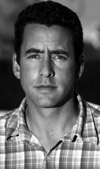 |
Gregory Kallenberg
Schlosser Development
|
|
Kallenberg: The current trend is a dense mixture of one-of-kind national stores and local boutiques mixed in with cafés and restaurants. Austin's trend is tilting toward people wanting a downtown shopping experience in a real downtown. TREB: Where is the majority of developing taking place? For what reason?
DeJernett: We have development all over town. The east side of town is not seeing that much new retail development yet, but I think as 130, which is a north/south artery, and some of the east/west connectors, come on, you'll see some retail there too. I think there'll definitely be a wave of development on the east side once that road's opened up. The first phases of it start to open up in ‘07.
TREB: Are there any major retail projects underway or planned in your market?
Kallenberg: Schlosser is currently working on placing an Anthropologie and an REI into Austin's Market District. We have three other parcels to develop, and we are currently looking at highest and best-use scenarios. These plans include dense, urban mixed-use. We are trying to do this right and be methodical in our development. We are looking down the road and contemplating long-term growth and looking at the Market District as a permanent fixture of Austin's downtown.
 |
Dean Janeff
NAI Commercial Industrial Properties Company
|
|
Sanchez and Janeff: There are 4.06 million square feet of projects that have broken ground or soon will be. Of the under-construction space, 3.4 million square feet will deliver in 2006. The retail market absorbed 259,941 square feet during the first 6 months of 2005. Much of this absorption was due to two new projects in Georgetown: Wolf Ranch Town Center, a Simon Properties center, and Rivery Crossing, which is being developed by UCR out of Dallas. So far the retail sector has maintained its strong showing in light of the new construction. Time will tell if the market is able to withstand new large projects such as Southpark Meadows in South Austin, The Triangle in North Austin and The Shops at Galleria in Bee Caves in the short term, and additional retail projects planned for Bastrop, Buda, Round Rock and North Austin in the long term. TREB: Are there any new retailers entering the market?
 |
Sherry Sanchez
NAI Commercial Industrial Properties Company
|
|
Sanchez and Janeff: Wal-Mart Neighborhood Centers are expected to enter the market now that the Supercenters have been built out. Retailers that recently entered the Austin market include Neiman Marcus, Crate & Barrel and Cabela's. TREB: What type of retail projects, properties or retailers are lenders interested in?
Paine: We are seeing local, regional and national developers building all retail platforms in and around Austin. From strip centers and grocery store-anchored community centers to big box, lifestyle centers and regional malls, developers have a strong interest in this rapidly expanding market.
TREB: What do you see in the near future for the retail market in your area?
DeJernett: We're going to see some of these large projects take shape, and with that, they're going to bring in a combination of new tenants to the market and they're going to provide a place for some existing tenants to have a new location. From that, I think we're going to see a little bit of a turnover in some of the centers that are 10 years to 20 years old, where leases are coming up and some of the tenants are moving out of those to move into some of the newer product. There will be an overall growth in the retail market in Central Texas, as population grows and income grows, the retail will grow right along with it.
Kallenberg: Austin's downtown retail market is on an upward trend that will only benefit from more retail density. In the near future, we see more projects coming on line and, as a result, there being more choices for the Austin consumer. This will only strengthen the Austin downtown retail market and make our urban core an even better destination.
Paine: Because of its highly educated work force and positively viewed quality of life, Austin is positioned well for strong, long-term growth. In the most recent U.S. Census Bureau report, Austin was ranked 16th in the nation in population size with more than 680,000 residents. There are more than 1.3 million in the MSA. Retail development across all platforms should continue at a strong pace for the near future and beyond.
SAN ANTONIO
TREB: Can you give me an overview of the San Antonio retail market?
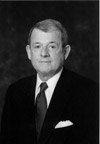 |
Tom Sineni
United Commercial Realty
|
|
Sineni: The market is hot. Housing and growth in the north, southeast, northeast, west and northwest is spurring demand never seen before. Wal-Mart, Target and HEB Supermarkets are building as fast as they can to keep competitive. CVS/pharmacy, which purchased Eckerd, is very active, as is Walgreens. Lifestyles centers are prolific. The Shops at La Cantera opened to throngs, and there is no slowdown in sight. Within eyesight ground has broken for Bass Pro Shops, a 12-screen theater and eventually super-sized boxes at the intersection. All four quadrants of the city have major new retail, either recently opened or under construction or both. Siegel: I think that San Antonio still has steady growth. Most of the big box spaces have been taken, and not all of them particularly for just retail use. I think that the vacancy rate has probably gone down, and we've got some major projects that just opened up 2 weeks ago. We're seeing major projects, all primarily going in the northern part of the city at the main intersections of Loop 1604 and the main highways. Generally speaking, I think that the retailers are very happy with how things are. I think, like the rest of the country, the ones doing the best are the ones dealing with the upper- to high-end income that are not affected by gas prices.
TREB: What trends do you presently see in retail development in your area?
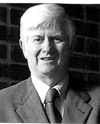 |
Chuck Siegel
NAI Rohde, Ottmers & Siegel
|
|
Siegel: What we're seeing is a need that's being filled for smaller spaces, spaces anywhere from 12,000 to 25,000 square feet, or what we call shallow-base surface spaces. As the residential growth builds, there is a need for the dentists, spas, hair salon and cleaners. This may be even more important as you see these gas prices going up, where people really are wanting to spend less time in the car. So you're seeing a lot of centers with the smaller restaurants and service-type retailers. TREB: Where is the majority of developing taking place? For what reason?
Siegel: The northern and the northwest parts of the city are where the housing is. Housing has been booming here, and retail follows the housing. San Antonio has been blessed with consistent growth that goes beyond most of our neighbors here in the state. We have jobs, we have a new Toyota plant that's going to open next year, so tourism still is a big boom here. We've overcome what happened on the base closures back in 1999 and really went through this last base closure unscathed. When you look at a place to live, the cost of living, you're really seeing very favorable conditions here.
TREB: Who are the active retail developers?
Siegel: The majority is coming out of the city, as far as developers. There are a lot of people coming from California. People that are seeing the prices there getting so excessive that our prices, even though they've gone up, seem cheap in relation. There have been a lot of purchases of land in the areas where the homes are going. That's really where the trends are.
TREB: How is the city working with retailers and developers to encourage development?
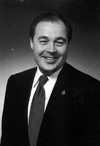 |
Ramiro Cavazos
City of San Antonio
|
|
Cavazos: One of the factors in a strong retail sector is the growth of high-wage jobs. So, the city is actively involved in recruiting and retaining large corporate and governmental employers. During the next year, Toyota and its 21 suppliers will be adding more than 4,000 high-wage jobs to our employment base and spur new retail development on the south side of San Antonio. We will also see hefty employment increases from the opening of the Washington Mutual Regional Operations Center. In the governmental sector, San Antonio will be home to a new National Security Agency office with up to 1,200 jobs, and the realignment of military medical facilities brought about by BRAC 2005 will bring more than 3,000 new medical and healthcare jobs to Fort Sam Houston during the next few years. TREB: Are there any significant retail developments that have broken ground recently in San Antonio?
Cavazos: Most of the new developments will be occurring along San Antonio's outer freeway ring, Loop 1604. The Loop 1604 and IH-10 intersection in northwest San Antonio will probably be the most active corner in town. The city and the Brooks Development Authority are active partners in the development of the Brooks City-Base Landing. This 570,000-square-foot shopping center will be located at the northeast corner of the Brooks City-Base. The city is also working with Landry's Restaurants, Inc. to create a new restaurant on top of the city-owned Tower of the Americas. The new restaurant set to open in 2006 will be called Eyes Over Texas.
TREB: What does the leasing market look like?
Siegel: I think that the leasing market during the past few years has been very healthy. Prices, as far as leasing 5 years ago goes, if you'd told me that we'd be leasing properties at these rates, I would've told you that you were crazy. But it's all relative. Costs are going up, land is going up. It follows the housing market.
TREB: What are the vacancy rates?
Siegel: I think that overall you've probably got somewhere around 93 percent occupied. And we're seeing centers going up that are pre-leased before they're even built in these smaller-type centers. They're able to lease these virtually 100 percent, certainly 6 months after completion.
TREB: What do you see in the near future for the retail market in your area?
Siegel: I think things will stay steady here. My great concern is looking at the cost of energy and people having less discretionary income to spend. My theory is that it's going to be a pretty rough Christmas, and there could be some pullback in the growth. Aside from that, though, I think we'll still fair better than most of our other cities in Texas. We have available jobs, one of the lowest unemployment rates in the state and there are really just a lot of plus things about the city that make me think we'll do fine.
Cavazos: As we all know, retail follows rooftops. And, rooftops follow jobs. So, as the city continues to see healthy job growth increases, we believe that new household formation will continue to contribute to the healthy growth of the city's retail sector.
TREB: What submarkets should people keep an eye on?
Siegel: There are some projects that are going on in the southeast part of the city. There are two projects going up at the crossing close to southeast Goliad and Interstate 37. Two major projects that are going on, and the revitalization of another. In the southeast military highway corridor, which has always been a real good corridor for the southern part of our city, there's been a lot of expansion going on there as well.
FORT WORTH
TREB: Can you give me an overview of your market as far as retail is concerned?
Lake: As a whole, Fort Worth is now the fastest growing large city in the country. In the Metroplex, it really has become a shining star because of its pro-business attitude, its proximity to the Dallas/Fort Worth International Airport and its central city core, which has been revitalized and has come a long way. It's a very livable city in the downtown with lots of condominiums, townhomes and retail. In our corridor, up north, the majority of the growth, both corporately and residentially, is occurring, although the city is growing all the way around here, 360 degrees. In the north sector, that I-35 sector where our Alliance Town Center project is now under construction, there have been somewhere around 7,000 new homes built a year within an 8-mile radius of that site. That number continues to grow as those homes come in. Overall, Fort Worth is a very dynamic market growthwise, and residential growth fuels the need for retail growth. Sturns: The retail market continues to improve with occupancy remaining consistent at approximately 89 percent. The city had 1.4 million square feet of new retail construction in 2004 with average rents of $14 per square foot per year. Most of the development has been in the west and north sectors of Fort Worth, but the city continues to focus on bringing new development to the southeast and east. Retail companies headquartered in Fort Worth include Radio Shack and Pier 1 Imports. Even with all the development, there remains an untapped urban market in Fort Worth that is underserved by retail development.
TREB: What trends do you presently see in retail development in your area?
Lake: I think there's more and more of a trend of blending retail types together. You used to have a power center and a mall, now you have a hybrid that combines a little bit of all of that including entertainment and good restaurants, as well. In our Alliance Town Center project, for example, we have a 300-acre project. Sixty acres of that is a major hospital, and we'll have about 60 acres dedicated to higher-density residential, some of which will be over at our future town center phase. There's just more of a blending of uses in today's environment.
 |
Randall Stone
Carter & Burgess
|
|
Stone: We see trends toward mixed-use projects in Fort Worth. A hotel program is present in most of our larger projects, as well as multifamily housing and commercial office space. Office condominium components are more common in some of our smaller, open-air projects. TREB: Where is the majority of development taking place? For what reason?
Stone: Due to competition and higher land cost, the development continues to move farther into the suburbs. However, we have seen more urban infill projects being developed. Most infill projects are a repositioned property that is no longer competitive. Multifamily housing and failed retail projects are drawing the most interest. In addition, these projects often develop adjacent to planned light rail stops.
TREB: Are you seeing more big boxes or smaller tenants coming into your market? Are there any new retailers entering the market?
Stone: We do see more junior anchor tenants developing in some of these outer markets. We also see more large box sporting goods retailers continuing to expand.
TREB: Are there any significant retail developments that have broken ground recently in your market?
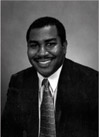 |
Robert Sturns
City of Fort Worth
|
|
Sturns: There are several exciting projects that have either been recently completed or are underway in Fort Worth. The 230,000-square-foot Cabela's located in north Fort Worth at Interstate 35W and Texas 170 opened its doors to the public in May. Kimco is developing a SuperTarget at the site of a vacant Montgomery Ward's building, which is located at 2600 West Seventh Street. The former Seminary South shopping center is being transformed into a festival-style Mercado by developer Jose de Jesus Legaspi. Work will soon start on the conversion of 9.4 acres in the Medical district into a planned $35 million, mixed-use project called Midtown Village. Construction could start in early 2006 and be finished by mid-2007. Commonwealth, a Dallas-based retail development group, has bought the site of the former Texas Steel plant on Hemphill Street with plans for a $28 million shopping, cultural and professional center. Construction on the center, Plaza de las Americas, could begin in 6 to 8 months, following some cleanup of the site. Lake: Within AllianceTexas, we currently have about 24 million square feet of commercial space. It's all been built since the project opened in 1989. Retail always lags other growth until you get all the residential around it. It's the residential growth that we're experiencing now, and retail is really coming into its own. The first major retail user we were able to secure was Cabela's. They opened earlier this year. It's their second largest store in the country, and I understand that it's trending with very high volumes. We've been working with General Growth for several years on the Shops at Circle T, which we're making good progress with them on. It will ultimately be a 1.5 million-square-foot retail center that will have a Foley's, Dillard's and an AMC Theatre, and we have a couple other high-end department stores that are in our sights.
TREB: Who are the active retail developers in Fort Worth?
Stone: All of the local retail developers are very active, and we also see all of the national developers very active in our market. In addition, we are experiencing a number of developers that normally are more regional in other markets taking a role in the I-35 corridor regional market.
TREB: How is the city working with retailers and developers to encourage development?
 |
The Shops at Circle T Ranch is being developed by Hillwood and General Growth Properties at State Highway 114 and Westlake Parkway in Fort Worth.
|
|
Sturns: The city council has included two goals for economic development in their vision for Fort Worth, one is to diversify the economic base and create job opportunities, and the second is the revitalization of our central city neighborhoods and commercial districts. The city utilizes financial incentives — such as tax abatements, Chapter 380 economic development grants, tax increment financing districts and community facilities agreements — to promote development in our targeted areas.
TREB: What do you see in the near future for the retail market in your area? What submarkets should people keep an eye on?
Stone: I continue to see a strong retail market in the near future. Retail sales are good and are forecasted to continue. Carter & Burgess has a number of projects that are online for fall 2006 and fall 2007.
Sturns: I think the retail market will continue to experience continued growth in the Alliance and Cultural District areas. Downtown continues to be a strong market for residential development, which will spur an increased need for retail services in that sector.
Lake: I think it's going to continue to be positive. There's no reason that growth will slow down residentially or commercially. So, we think it's very positive.
©2005 France Publications, Inc. Duplication
or reproduction of this article not permitted without authorization
from France Publications, Inc. For information on reprints of
this article contact Barbara
Sherer at (630) 554-6054.
|
